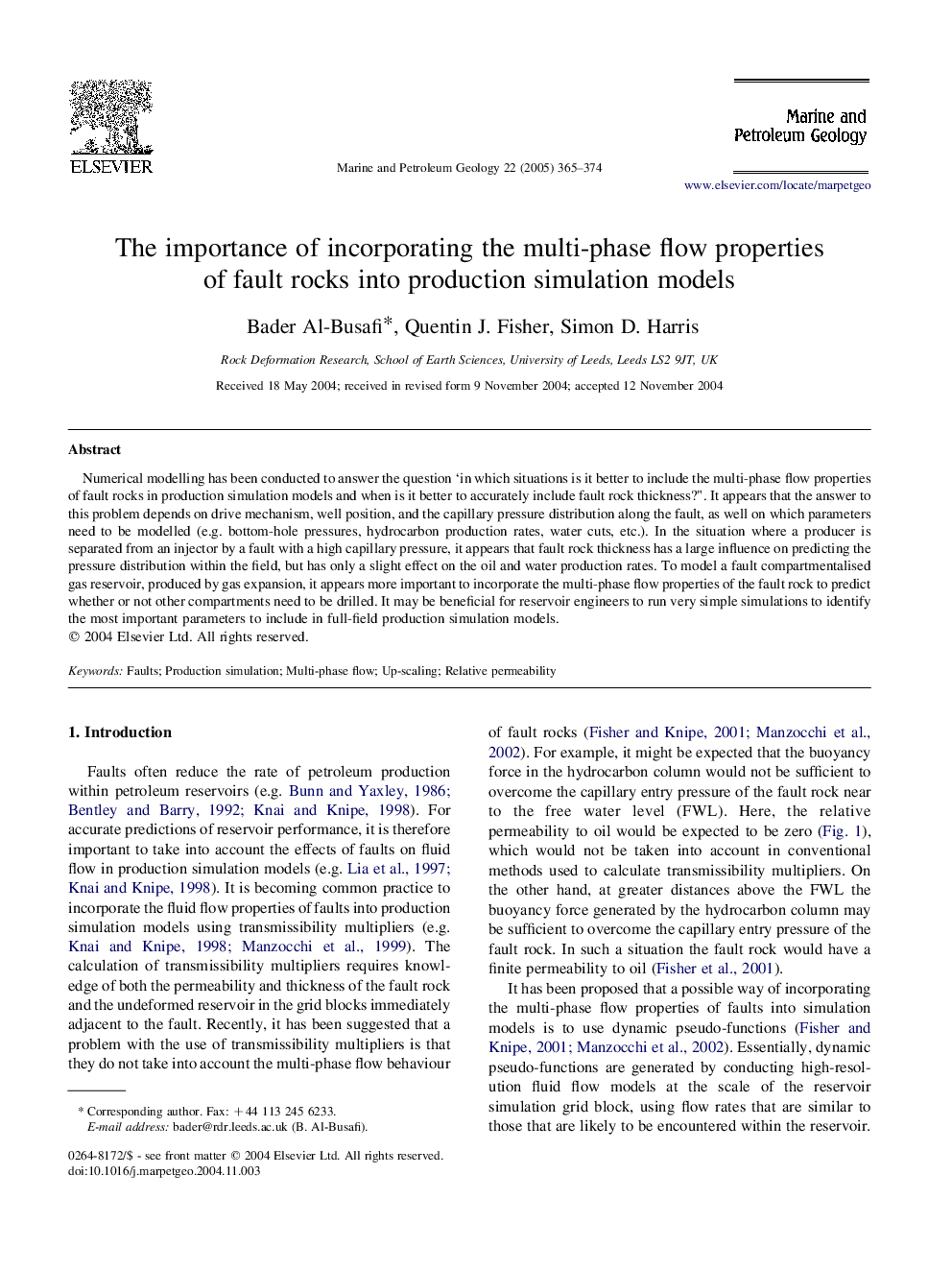| Article ID | Journal | Published Year | Pages | File Type |
|---|---|---|---|---|
| 9528396 | Marine and Petroleum Geology | 2005 | 10 Pages |
Abstract
Numerical modelling has been conducted to answer the question 'in which situations is it better to include the multi-phase flow properties of fault rocks in production simulation models and when is it better to accurately include fault rock thickness?". It appears that the answer to this problem depends on drive mechanism, well position, and the capillary pressure distribution along the fault, as well on which parameters need to be modelled (e.g. bottom-hole pressures, hydrocarbon production rates, water cuts, etc.). In the situation where a producer is separated from an injector by a fault with a high capillary pressure, it appears that fault rock thickness has a large influence on predicting the pressure distribution within the field, but has only a slight effect on the oil and water production rates. To model a fault compartmentalised gas reservoir, produced by gas expansion, it appears more important to incorporate the multi-phase flow properties of the fault rock to predict whether or not other compartments need to be drilled. It may be beneficial for reservoir engineers to run very simple simulations to identify the most important parameters to include in full-field production simulation models.
Related Topics
Physical Sciences and Engineering
Earth and Planetary Sciences
Economic Geology
Authors
Bader Al-Busafi, Quentin J. Fisher, Simon D. Harris,
